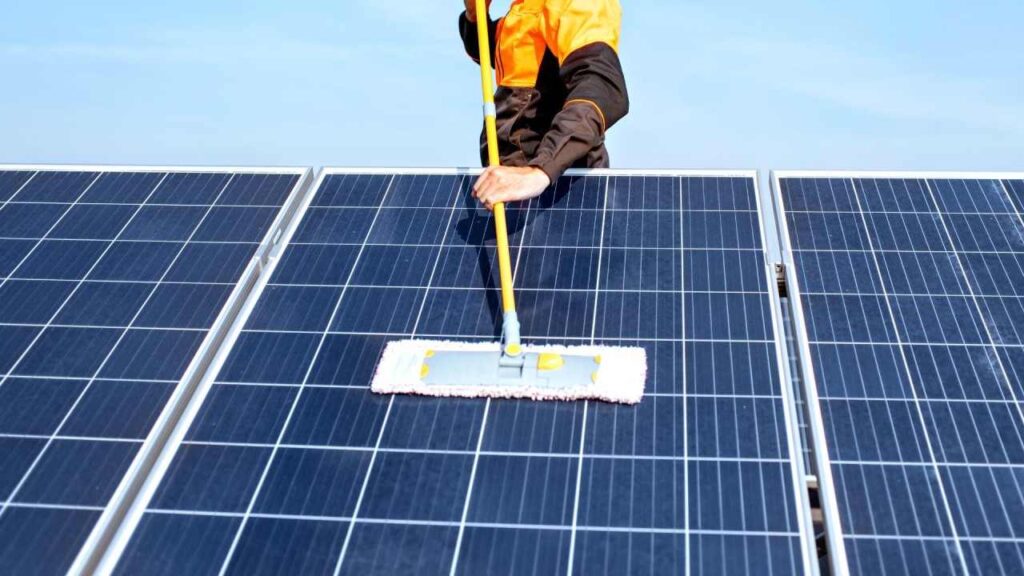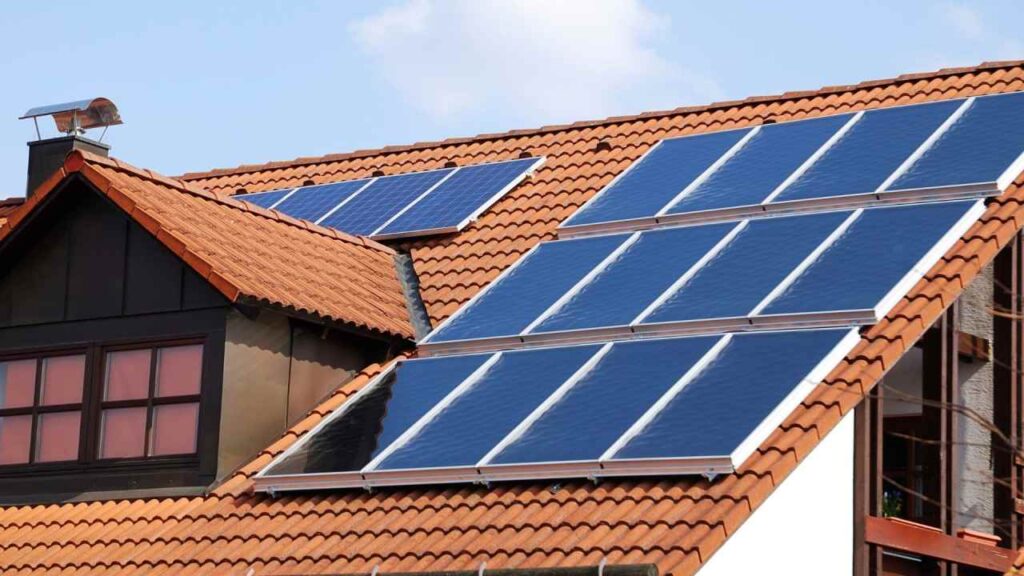Embracing renewable energy sources like solar power has become increasingly popular, but with that comes the responsibility of ensuring the longevity and functionality of your solar panel system, especially during severe weather events. From intense storms to extreme temperatures, safeguarding your investment is crucial. In this guide, Authentic Roofing LLC will walk you through practical steps to prepare your solar panels for various weather challenges, allowing you to harness clean energy without compromising the system’s durability.

Understanding Severe Weather’s Impact on Solar Panels
Solar panels are built to withstand the elements, but severe weather can still pose a threat. Hail, heavy snow, high winds, and extreme temperatures can all potentially damage or degrade your panels. By understanding the potential risks, you can take proactive measures to mitigate the impact of severe weather and maintain the efficiency of your solar energy system.
Regular Maintenance and Inspection
Consistent solar roof maintenance and thorough inspections are the foundation of a resilient solar panel system. Check for loose connections, cracks, or corrosion regularly. Clear away debris like leaves or bird droppings, as they can obstruct sunlight absorption. By spotting issues early, you can prevent small problems from escalating into major damage during severe weather events. Make sure you choose the right solar panel installer to avoid frequent maintenances
Reinforce Mounting and Support Structures
Mounting systems secure your panels to your roof or the ground. Ensure they are robust enough to withstand high winds and heavy snow loads. Reinforce weak points, tighten bolts, and replace any damaged components. If your area is prone to hurricanes or strong winds, consider investing in stronger mounting systems designed for severe weather conditions.
Protective Measures for Hail and Snow
Hail and snow can cause significant damage to solar panels if not managed properly. Install hail guards made of durable materials over your panels to absorb the impact of hailstones. For snow-prone regions, panels should be tilted at an angle that allows snow to slide off easily. Use a soft brush or a roof rake to gently remove accumulated snow, avoiding harsh tools that could scratch the surface.
Wind Resistance and Panel Positioning
Positioning your solar panels correctly plays a role in withstanding strong winds. Panels should be installed parallel to the strongest prevailing winds in your area to minimize wind resistance. Regularly inspect the panel alignment to ensure they haven’t shifted due to gusty winds. Additionally, trimming overhanging branches and nearby trees can prevent potential damage caused by falling debris.
Temperature Extremes and Cooling Strategies
Extreme temperatures, whether hot or cold, can impact the efficiency of your panels. High temperatures can lead to power losses, while freezing temperatures might cause thermal stress. Choose panels with good temperature coefficient ratings. Providing proper ventilation or investing in cooling technologies can help regulate panel temperatures and prevent overheating, thus improving their overall performance and longevity.
Emergency Shutdown Protocols
Implementing emergency shutdown protocols can protect your solar panels during severe weather. In the face of an impending storm, shutting down the system and disconnecting it from the grid can prevent electrical surges and potential fires. Install a manual disconnect switch that’s easily accessible, and ensure all family members know the shutdown procedure to ensure everyone’s safety.

Surge Protection and Backup Systems
Severe weather often brings power surges and outages. To shield your solar panels from voltage fluctuations, install surge protection devices. These devices redirect excess energy away from your panels and prevent damage to sensitive electronics. Additionally, consider investing in battery backup systems that store excess energy generated by your panels. These backups can provide power during grid outages, ensuring continuous energy availability even in the face of severe weather-related disruptions.
Regular Monitoring and Remote Management
Remote monitoring technology allows you to keep a close eye on your solar panel system’s performance from a distance. During severe weather events, such as storms or heavy snowfall, you can remotely shut down the system if necessary. Monitoring also helps you identify any issues promptly, so you can take action before they escalate. Some systems even offer predictive analytics that can alert you to potential problems based on weather forecasts, enabling you to take preventive measures in advance.
Community Resources and Insurance Coverage
In regions prone to severe weather, consider joining local community networks focused on renewable energy. These networks often share best practices and offer support during emergencies. Additionally, review your homeowner’s insurance policy to ensure it covers potential damage to your solar panel system caused by severe weather. Discuss with your insurance provider to understand coverage options and make any necessary adjustments to safeguard your investment effectively.
FAQs:
How can we protect solar panels from storms?
Properly securing solar panels with reinforced mounting systems and conducting regular maintenance can help protect them from storms.
Can bad weather damage solar panels?
Yes, bad weather like hail, heavy snow, and strong winds can potentially damage or degrade solar panels if precautions aren’t taken.
How can we protect solar panels from lightning?
Installing lightning arrestors and grounding systems can help divert lightning strikes away from solar panels, protecting them from damage.
Does heavy rain affect solar panels?
While rain itself doesn’t usually damage solar panels, accumulated debris carried by heavy rain might affect panel performance, highlighting the importance of proper maintenance.
Conclusion (100 words): As the world embraces solar energy, it’s crucial to equip ourselves with the knowledge and tools to protect our solar panel investments from the challenges posed by severe weather. By maintaining and inspecting your panels regularly, reinforcing their structural integrity, and implementing protective measures for hail, snow, wind, and temperature extremes, you can ensure that your solar energy system remains resilient and efficient. With these precautions in place, you can continue to enjoy clean, renewable energy while weathering the storms that may come your way.
